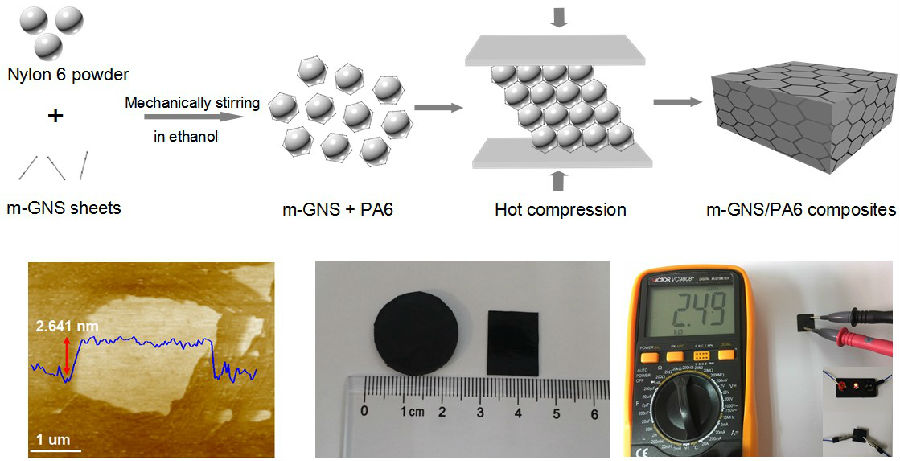Graphene-based polymer composites with superior electrical and mechanical performance are highly desirable because of their wide range of applications. However, due to the mismatch between charge jumping and the load transfer of adjacent graphene sheets, it remains difficult to achieve significant, simultaneous improvements in electrical and mechanical properties of graphene−polymer composites. To overcome this issue, we here propose an effective strategy to constructed unique 3D conductive networks in which the compatibility of graphene and polymer can be improved by controlled decoration of few-defect graphene sheets, while segregated graphene networks retain good charge-jumping capability. The final composites exhibit an ultra-low electrical conductive percolation threshold of 0.032 vol % and an ultrahigh electrical conductivity of 60 S/m at only 2.45 vol %, superior to most of the reported results. They also reveal significantly improved thermodynamic properties, tensile strength, and toughness. We believe that such a simple, industrially feasible method contributes to boost the development of high-performance, functional graphene−polymer composites.
This work has been published on ACS Applied Materials & Interfaces, see details:
Peng Wang, Haodan Chong, Jiajia Zhang and Hongbin Lu*, Constructing 3D Graphene Networks in Polymer Composites for Significantly Improved Electrical and Mechanical Properties. ACS Appl. Mater. Interfaces 2017, DOI: 10.1021/acsami.7b07328. Link
